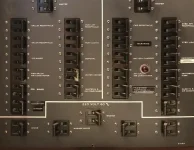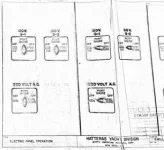oscarvan
Legendary Member
- Joined
- Oct 31, 2015
- Messages
- 2,926
- Status
- OTHER
- Hatteras Model
- Not Currently A Hatteras Owner
One more electrical question. There was a time marinas had 2 120V 50A hookups. Was there 240 between them? Or were 240 items like the cook top and W/D not available when hooked up to these? The way the panel is set up I don’t see the current making it down to the 240 section. But seems odd you wouldn’t have a stove.
Last edited:




